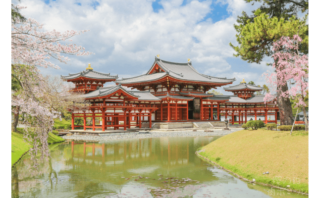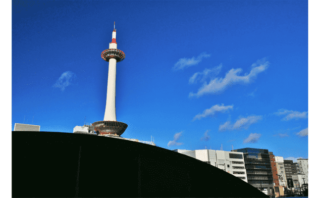Uji City, located in Kyoto Prefecture, is famous for its Uji tea and connections to The Tale of Genji.
In recent years, the number of visitors has been steadily increasing, especially since Uji served as the setting for the popular anime Sound! Euphonium. This charming city is loved by people of all ages and has become a favorite destination for tourists.
In this article, I will introduce you to a carefully selected list of must-see spots in Uji. It’s packed with recommendations, so by the end of your visit, you’ll have experienced the best of what Uji has to offer!
Uji Offers More Than Just Matcha
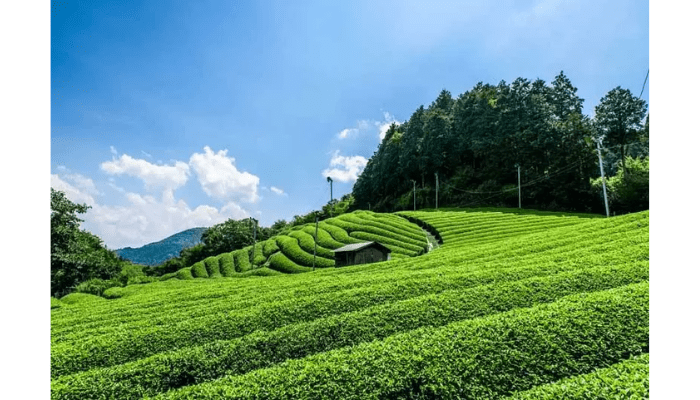
Uji City is located in southern Kyoto Prefecture, bordering Kyoto City and Otsu City. It’s the second most populous city in Kyoto Prefecture.
When you think of Uji, the first thing that probably comes to mind is “matcha.” While Uji is indeed famous for its high-quality green tea, there’s so much more to this city than matcha.
Uji is home to remarkable cultural treasures, including Byodoin Temple and Ujigami Shrine, both registered as UNESCO World Heritage Sites in 1994 as part of the “Historic Monuments of Ancient Kyoto.” You’ll also find intriguing spots like Agata Shrine, which honors Konohanasakuya-hime, a goddess from Japanese mythology.
For temple and shrine enthusiasts, Uji offers a wealth of historical sites and cultural heritage to explore.
Even when it comes to matcha, Uji takes things to another level. It’s not just a tea to drink but also a key ingredient in creative local treats, including unforgettable sweets and gourmet dishes that make for perfect souvenirs.
Fans of anime may know Uji as the setting for Sound! Euphonium, a popular series about a high school brass band. The city is the hometown of the original novel’s author, Ayano Takeda, and many of the locations in Uji inspired scenes in the story. Keihan Railway, which operates Uji Station, even collaborates with the anime, making Uji a pilgrimage spot for fans.
With so much to see and experience, Uji is a city full of charm and surprises. Take your time to explore its many attractions and make the most of your visit!
Mimurotoji Temple
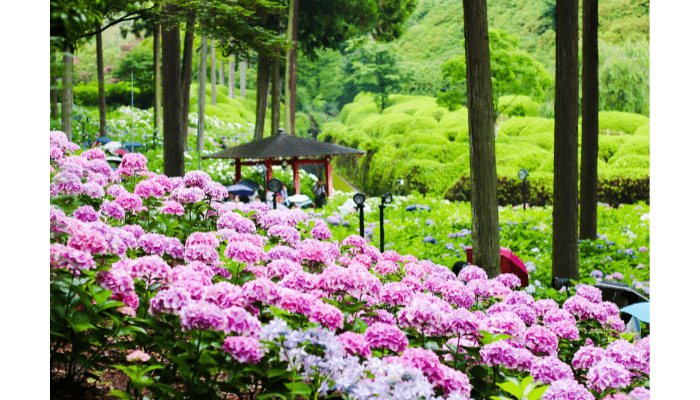
When talking about temples in Uji, Byodoin Temple and Ujigami Shrine often come to mind first. However, for a truly enchanting experience of Japanese tradition and seasonal beauty, Mimurotoji Temple is a must-visit destination.
The temple is especially popular from early June to early July, when the famous hydrangea garden opens to visitors. During this month-long period, you can admire 10,000 hydrangeas in 50 varieties, beautifully arranged among towering cedar trees.
At the peak of the blooming season, the garden transforms into a breathtaking sea of color, leaving visitors speechless. Thanks to the incredible display, Mimurotoji is often called the “Temple of Hydrangeas” and attracts visitors from across Kansai and beyond.

But there’s more to Mimurotoji Temple than just hydrangeas.
Founded over 1,200 years ago, this temple is a key site in the Shingon Buddhist tradition. It serves as the 10th temple in the Saigoku Kannon Pilgrimage, a popular route for worshippers of Kannon, the Goddess of Mercy, since the Heian period. The temple also features a stunning dry landscape garden and seasonal flowers, which add to its charm.
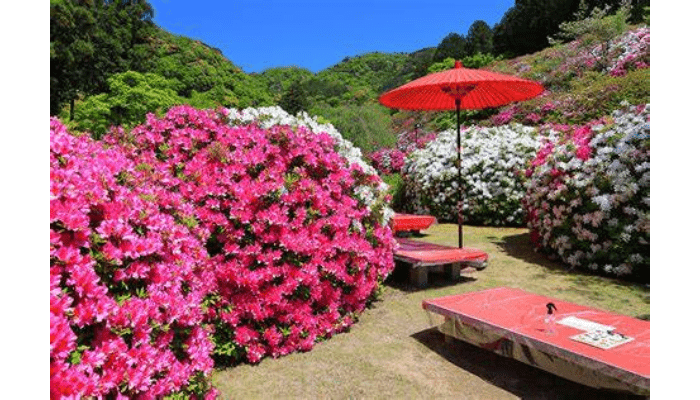
Known as the “Temple of Flowers,” Mimurotoji is home to 20,000 azaleas in spring and lotus flowers in early summer, creating a spectacular display year-round.
As you explore the grounds, take a moment to visit the historic site next to the temple’s bell tower. This spot is said to be connected to “Ukifune,” one of the famous Uji chapters in The Tale of Genji.
Mimurotoji Temple Information
- Address: 21 Todou Shigatani, Uji City, Kyoto Prefecture
- Map: Google Maps
- Access: 15-minute walk from Keihan Mimuroto Station
- Phone: 0774-21-2067
- Closed: August 13–15, December 29–31 (Also closed during severe weather warnings)
- Hours:
- 8:30 AM–4:30 PM (Nov 1–Mar 31: until 4:00 PM)
- Treasure Hall is closed for repairs until March 2023.
- Admission:
- Regular: Adults ¥500, Children ¥300
- Peak Season (Feb 18–Jul 17 & November): Adults ¥1,000, Children ¥500
- Parking: 300 spaces available (¥500 for cars, ¥2,000 for buses)
- Official Website: Mimurotoji Temple
2. Hashihime Shrine
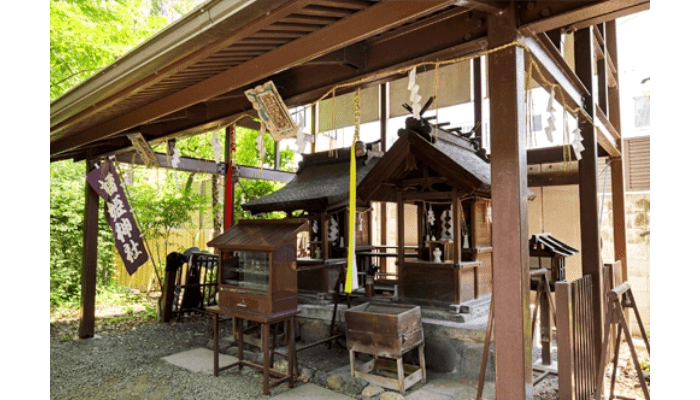
Just a short walk from Uji Station, Hashihime Shrine is a small and tranquil spot that’s easy to miss if you’re not paying attention. Located to the left after passing through the torii gate on Agata Street near the western end of Uji Bridge, this unassuming shrine is an important part of Uji’s spiritual heritage.
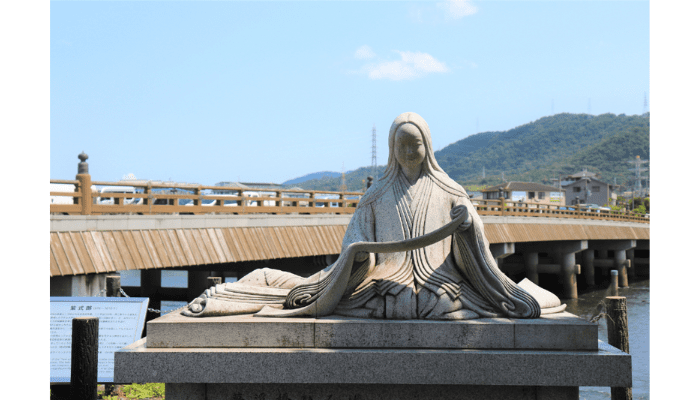
The shrine is dedicated to “Hashihime,” the guardian deity of Uji Bridge, who is worshiped for protecting the bridge and those who cross it.
Hashihime is enshrined alongside Sumiyoshi Myojin, a deity of water transportation, reflecting the belief that bridges and waterways are spiritually significant places. Hashihime is also revered as a deity of purification, believed to wash away impurities, hardships, and bad relationships. For this reason, the shrine is known as a “god of cutting ties,” attracting many visitors seeking to break free from negative connections.
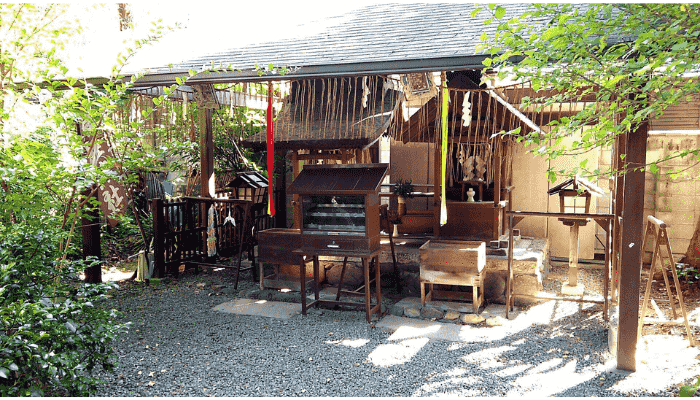
When you step into the shrine’s grounds, you’ll be struck by its unique atmosphere and remarkable stillness. Despite its size, the shrine carries a rich history and is deeply connected to local traditions. It is even said to be the origin of the famous “Ushi no Koku Mairi” ritual, a midnight prayer for vengeance or transformation.
Additionally, Hashihime Shrine is associated with The Tale of Genji, specifically the “Hashihime” chapter from the Uji Jujo (Uji’s Ten Chapters), making it a must-see spot for fans of the classic Japanese literary work.
Hashihime Shrine Information
- Address: 46 Uji Renge, Uji City, Kyoto Prefecture
- Map: Google Maps
- Access: 10-minute walk from Uji Station
- Phone: 0774-21-2017
- Closed: Irregular holidays
- Hours: 9:00 AM–5:00 PM
3. Agata Shrine
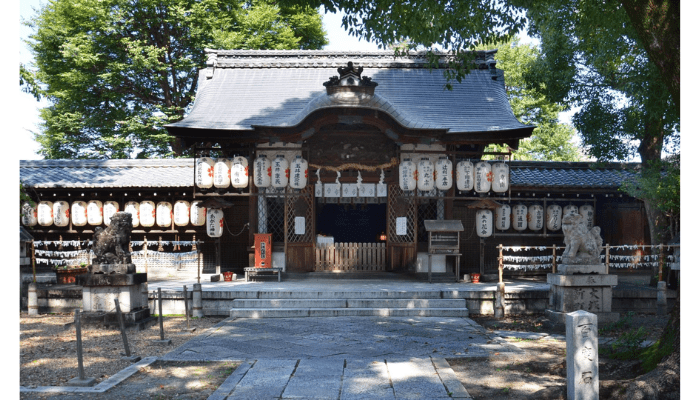
After crossing Uji Bridge and visiting Hashihime Shrine, you’ll come across a large shrine on your left as you continue uphill. This is Agata Shrine, dedicated to the goddess Konohanasakuya-hime.
The name “Agata” refers to an ancient administrative district established by the Yamato government in important areas of western Japan. Agata districts located within the “Kinai” region—consisting of Yamashiro, Yamato, Kawachi, Izumi, and Settsu provinces—played vital roles in both politics and religious practices.
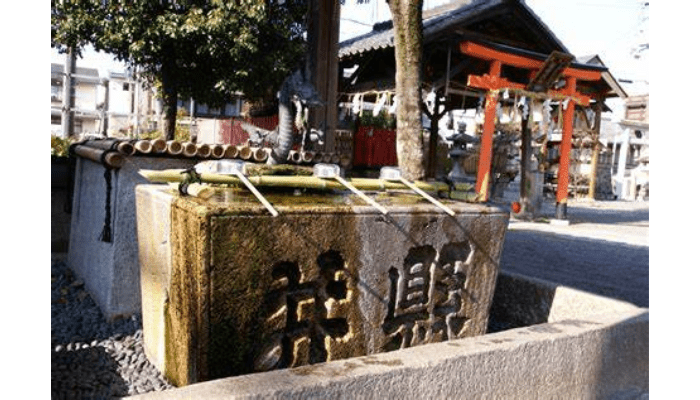
Konohanasakuya-hime is a prominent goddess in Japanese mythology. She is the daughter of Ōyamatsumi no Kami and the wife of Ninigi no Mikoto, the grandson of the sun goddess Amaterasu. Together, they had three children: Hoderi no Mikoto, Hohodemi no Mikoto, and Honosusumi no Mikoto.
She is also worshiped as the deity of Mount Fuji at Asama (Sengen) Shrines across Japan. Interestingly, Konohanasakuya-hime is said to be the inspiration for Princess Kaguya in the Tale of the Bamboo Cutter. As a central figure in Japanese mythology, she is highly revered for her connection to the imperial lineage.
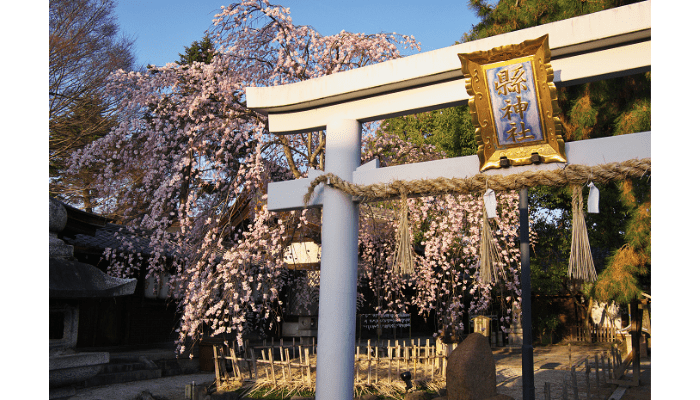
The word “Sakuya” in Konohanasakuya-hime’s name is said to be related to the word for cherry blossoms (sakura), and the shrine features beautiful cherry blossoms as its symbol.
In spring, a stunning weeping cherry tree on the shrine grounds comes into full bloom, captivating visitors with its elegance, which seems to mirror the goddess herself. Hidden among the grounds, you may also spot smaller blossoms at your feet, so take your time to explore!
Konohanasakuya-hime, a mother of three in mythology, is also celebrated for blessings related to safe childbirth and fertility, attracting many visitors seeking such divine favor.
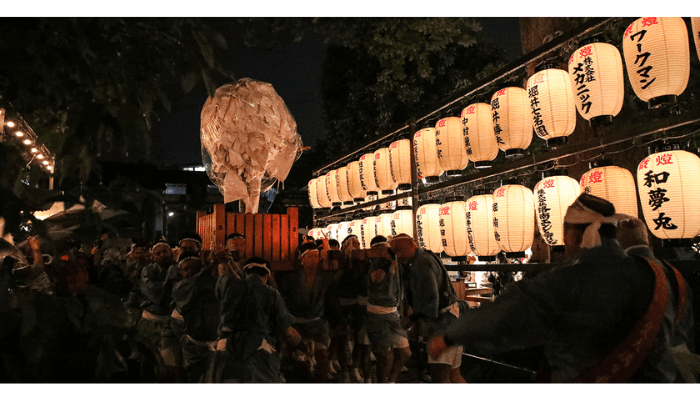
Agata Shrine is also famous for its annual “Anya no Kisasai” festival, often called the “Dark Night Festival.” This unique event takes place in the early hours of June 6 and is a highlight of Uji’s cultural calendar.
Agata Shrine Information
- Address: 72 Uji Renge, Uji City, Kyoto Prefecture
- Map: Google Maps
- Access: 8-minute walk from Uji Station
- Phone: 0774-21-3014
- Closed: Open year-round
- Hours: Open anytime
- Admission: Free
- Parking: None
- Website: Kyoto Uji Agata Shrine
4. Byodoin Temple & Byodoin Museum Hoshokan

When you think of Uji, Byodoin Temple is an iconic destination that cannot be missed. Known worldwide, this UNESCO World Heritage Site is one of Uji’s most famous attractions.
The stunning Phoenix Hall, featured on the Japanese 10-yen coin, is the highlight of Byodoin Temple. Visitors flock here to capture the breathtaking reflection of the hall on the surface of the pond. The contrast between the building itself and its mirrored image in the water creates a mystical and timeless scene.

During wisteria season, the nearby wisteria trellises attract large crowds, some visiting just to admire the cascading purple flowers. The combination of the temple’s grandeur and the seasonal blooms makes Byodoin Temple even more enchanting.
As you walk further into the grounds, you’ll find the Byodoin Museum Hoshokan. This museum offers not only fascinating seasonal exhibitions but also an opportunity to admire its sophisticated architecture, both inside and out. Known as the “Museum of Eternal Beauty,” the Hoshokan showcases the history and artistry of Byodoin Temple in a way that truly captivates visitors.
Take your time to explore every detail of this remarkable site, from its historical significance to its elegant design.
Byodoin Temple & Byodoin Museum Hoshokan
- Address: 116 Uji Renge, Uji City, Kyoto
- Map: Google Map
- Access: About a 10-minute walk from Uji Station
- Phone: 0774-21-2861
- Hours:
- Garden: 8:30 AM–5:30 PM (Last entry: 5:15 PM)
- Phoenix Hall Viewing: 9:30 AM–4:10 PM (Limited to 50 people every 20 minutes)
- Byodoin Museum Hoshokan: 9:00 AM–5:00 PM (Last entry: 4:45 PM)
- Admission Fees:
- Adults: ¥600
- Middle & High School Students: ¥400
- Elementary School Students: ¥300
- Parking: None
- Official Website: Byodoin Temple
5. Saishoin Temple
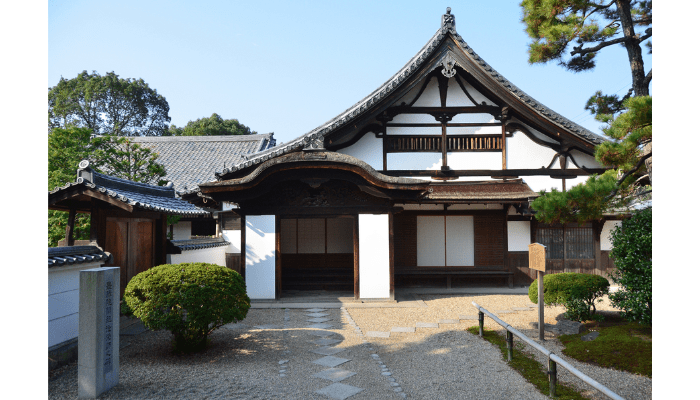
While Uji is famous as a pilgrimage destination for the anime Hibike! Euphonium, it also offers a hidden gem for fans of Touken Ranbu. That gem is Saishoin Temple, the final resting place of Minamoto no Yorimasa.
Located within the grounds of Byodoin Temple, Saishoin is easy to visit after exploring Byodoin. The site features the Grave of Minamoto no Yorimasa, a historical figure closely connected to Japanese sword legends. For Touken Ranbu fans, visiting this spot feels like stepping into the world of their favorite characters.
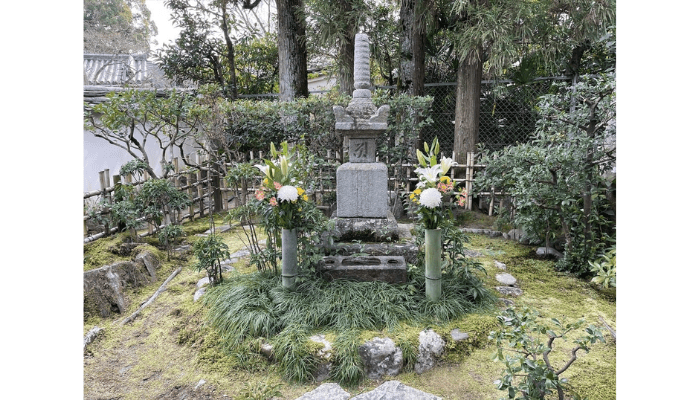
A special highlight here is the goshuin (temple stamp) available near the grave. It includes Yorimasa’s final poem and an elegant fan-shaped seal, making it a prized keepsake for visitors.
Saishoin is also popular among those seeking protection from misfortune. The temple’s statue of Fudo Myo-o is believed to ward off disasters, and many visitors come to pray for household safety, business success, and good fortune. It’s also a well-known spot for yakuyoke (warding off bad luck), drawing visitors of all ages year-round.
Saishoin Temple (Uji)
- Address: 114 Uji Renge, Uji City, Kyoto (within the Byodoin grounds)
- Map: Google Map
- Access: About a 10-minute walk from Uji Station
- Phone: 0774-21-2861
- Official Website: Byodoin Temple
6. Jusan Jusekito
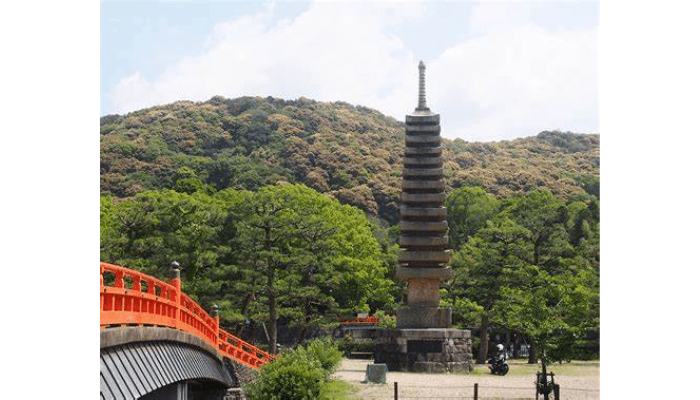
The Jusan Jusekito (13-story stone pagoda) stands on Tono Island, located upstream on the Uji River. At approximately 15 meters tall, it is said to be the largest stone pagoda in Japan. Not only is it the tallest, but it is also believed to be the oldest surviving stone pagoda in the country, making it a must-see for history and architecture enthusiasts.
The pagoda was built in 1286 (Kamakura period) by Eison, a high-ranking monk from Saidaiji Temple in Nara. Under imperial orders, Eison oversaw the reconstruction of Uji Bridge, a striking vermilion-lacquered bridge that spans the Uji River. As a devout Buddhist who followed a non-violence philosophy, Eison took special care to honor the lives of the fish sacrificed during the bridge’s construction. He buried fishing nets and tools beneath the pagoda as an offering and built the Jusanju Sekito to pray for the spirits of the fish and the enduring safety of Uji Bridge.
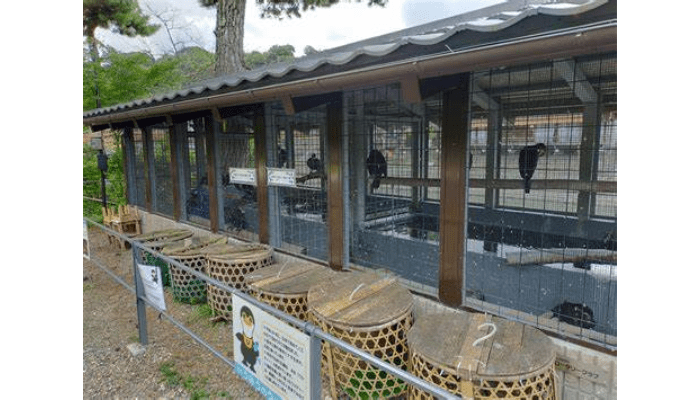
Today, the pagoda is located in Kyoto Prefectural Uji Park, a serene and family-friendly area. The park is also home to cormorants used in ukai (traditional cormorant fishing), which you can observe during your visit. It’s a wonderful place to take in the tranquil atmosphere, admire the historical pagoda, and spend quality time with loved ones.
Jusan Jusekito
- Address: Ujitogawa, Uji City, Kyoto (Kyoto Prefectural Uji Park)
- Map: Google Map
- Access: A 10-minute walk from Uji Station
- Hours: Open all day
- Admission: Free
- Parking: Not available
7. Uji Shrine
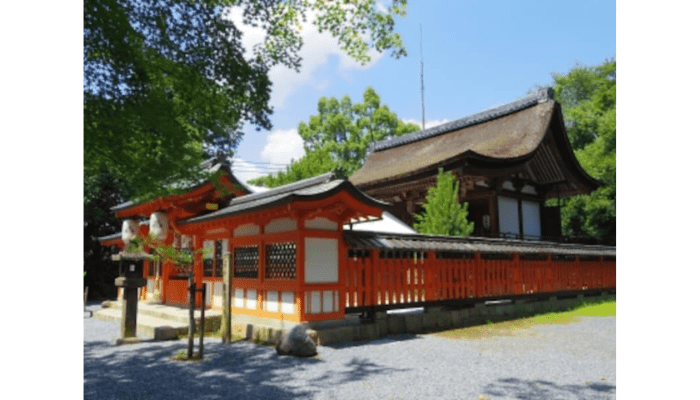
Uji Shrine, located at the base of Mount Asahi, is one of two iconic shrines in Uji, along with Ujigami Shrine, which sits further up the hill. Together, these shrines are must-visit destinations for anyone exploring Uji.
Throughout the grounds of Uji Shrine, you’ll notice adorable rabbit figurines scattered here and there. These figures represent the “Mikaeri Usagi” (the “Looking-Back Rabbit”), a legendary story passed down in Uji.
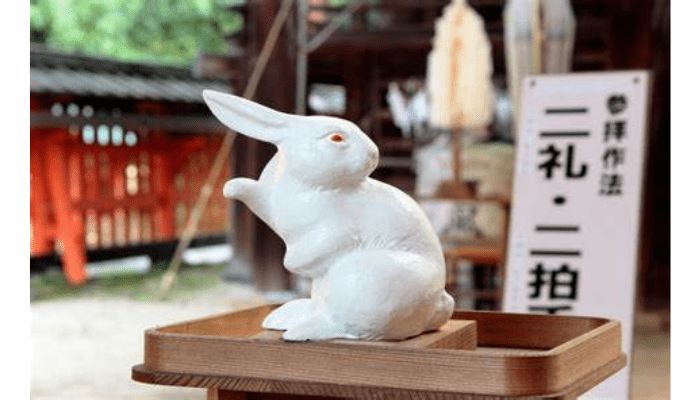
According to the tale, the Mikaeri Usagi serves as a divine messenger, guiding people onto the right path. Visitors are welcomed by the shrine’s peaceful atmosphere, rich history, and charming depictions of the rabbit, which create a sense of serenity and connection to nature.
A notable highlight of Uji Shrine is its power spot, located to the right of the main hall. This sacred area is said to be imbued with spiritual energy, attracting visitors from across Japan and the world. Many say the cool, crisp air surrounding this spot creates a mystical atmosphere that naturally makes you stand a little taller.
Take your time to absorb the energy of this special place. It’s a unique chance to feel the wisdom of nature and the ancient power cultivated over centuries at Uji Shrine.
Uji Shrine
- Address: 1 Ujiyamada, Uji City, Kyoto
- Map: Google Map
- Access:
- 5-minute walk from Keihan Uji Station
- 10-minute walk from JR Uji Station
- Phone: 0774-21-3041
- Hours: Open daily (prayer requests accepted until 4:00 PM)
- Admission: Free
- Parking: 35 spaces, 700 yen/day (9:00 AM–5:00 PM)
- Official Website: Uji Shrine Official Website
8. Ujigami Shrine

Ujigami Shrine, located along the Uji River, is a hidden gem and a UNESCO World Heritage Site. It lies on the path to Uji Shrine, welcoming visitors with charming rabbit motifs that represent the shrine’s divine messengers.
Many people are unaware that Ujigami Shrine is closely linked to Byodoin Temple, serving as its guardian shrine for centuries. Emperor Daigo once honored its significance by granting it the title “Rikyu Myojin” (Guardian Deity of the Detached Palace).
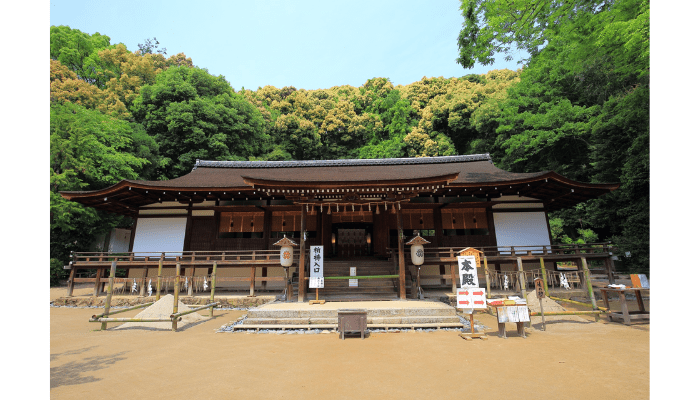
As you pass through the torii gate and walk along the long approach, you’ll see the worship hall (Haiden) straight ahead. Begin your visit here with a prayer. On both sides of the Haiden, you’ll find piles of sand called “purification sand,” which symbolize offerings to the gods. These are used during New Year rituals for purification ceremonies.
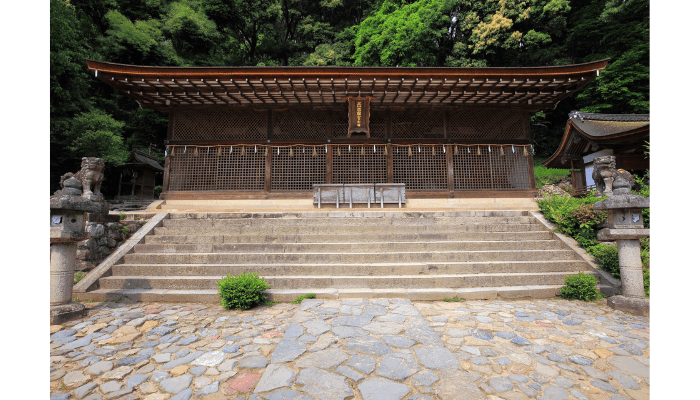
After visiting the Haiden, walk around to the back of the building to find the main hall (Honden). Smaller than the Haiden, the Honden is easy to miss, so be sure to explore further!
The Honden consists of three parts: Left Hall, Central Hall, and Right Hall, each featuring intricately painted doors that are designated as Important Cultural Properties. While visitors cannot enter the building, the elegant structure, a designated National Treasure, can be admired from the outside.
Both Uji Shrine and Ujigami Shrine are well-known for granting wishes related to academic success. Ujigami Shrine enshrines Ujinowakiiratsuko-no-Mikoto, a deity of learning and scholarship. During exam season and New Year’s celebrations, the shrine becomes especially popular, with long lines of visitors seeking blessings for academic achievements.

Before leaving, don’t forget to pick up a rabbit-shaped omikuji (fortune slip). These adorable keepsakes come in various colors, making it hard to choose just one!
Ujigami Shrine
- Address: 59 Ujiyamada, Uji City, Kyoto
- Map: Google Map
- Access:
- 10-minute walk from Keihan Uji Station
- 15-minute walk from JR Uji Station
- Phone: 0774-21-4634
- Hours: 9:00 AM–4:30 PM (Hours may vary seasonally)
- Admission: Free
- Parking: None
- Official Website: Ujigami Shrine – UNESCO World Heritage Site (Kyoto Prefecture Official Website)
9. The Tale of Genji Museum in Uji

When exploring Uji, a visit to the Tale of Genji Museum is a must. This unique museum is the only place in Japan where you can immerse yourself in the history and world of the famous “Tale of Genji”, written over 1,000 years ago.
The museum appeals not only to history enthusiasts but also to a wide range of Tale of Genji fans. Originally opened to celebrate the classic’s legacy, the museum underwent a renovation in 2008 during the Millennium Anniversary of the Tale of Genji, transforming into a more beautiful and accessible cultural space.
Through engaging videos, interactive displays, and historical artifacts, visitors can step into the intricate world of this timeless story. The museum also hosts special events, such as lectures and temporary exhibitions related to the Tale of Genji, making it a favorite destination for repeat visitors.
Another highlight of the museum is its convenient location—just a 7-minute walk from Keihan Uji Station, making it an easy addition to your Uji sightseeing itinerary.
The Tale of Genji Museum
- Address: 45-26 Uji Higashiuchi, Uji City, Kyoto
- Map: Google map
- Access:
- 6-minute walk from Keihan Uji Station
- 13-minute walk from JR Uji Station
- Closed: Mondays (or the following day if Monday is a holiday) and New Year’s holidays
- Phone: 0774-39-9300
- Hours: 9:00 AM–5:00 PM (Last entry at 4:30 PM)
- Admission: Adults: 600 yen / Children: 300 yen
- Official Website: Tale of Genji Museum
10. Kanbayashi Memorial Hall
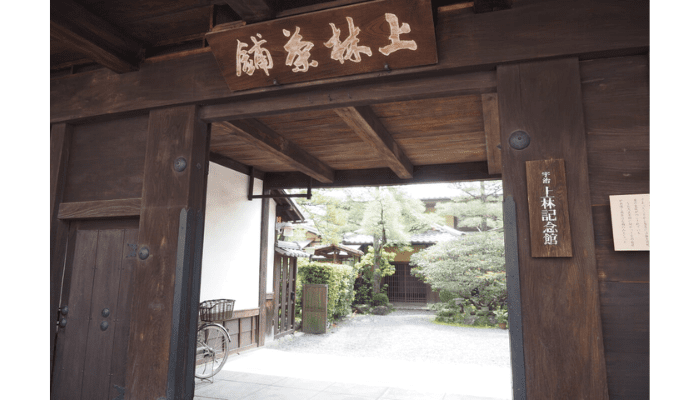
When visiting Uji, you simply cannot leave without experiencing its rich tea culture. A great place to start is the Kanbayashi Memorial Hall, where you can explore the fascinating history of Uji tea.
The museum is housed in a historical nagamoya-mon gate, originally part of the Kanbayashi family estate. The Kanbayashi family served as 御用茶師 (Gomotsu Chashi), or official tea masters, for the imperial court and shogunate during the Edo period. The current building was rebuilt in 1698, after the devastating Uji Great Fire.
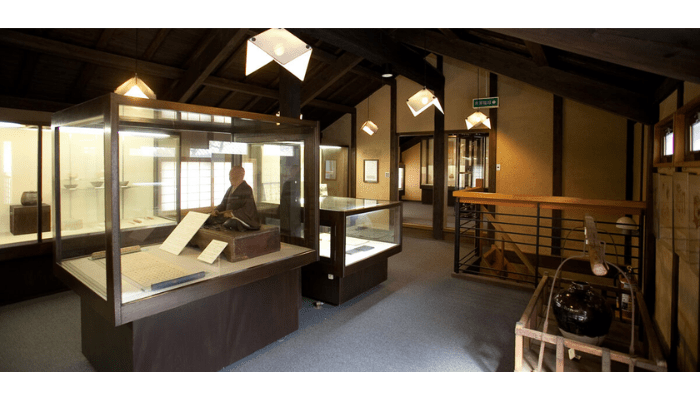
Inside, you’ll find a variety of exhibits showcasing tea-making tools and artifacts. Highlights include letters written by prominent figures in tea history, such as Toyotomi Hideyoshi, tea master Sen no Rikyu, and samurai-tea masters Furuta Shigenari and Kobori Masakazu, who played key roles in developing the tea ceremony during the Azuchi-Momoyama and early Edo periods.
The museum also displays rare items like the Rosu Jar, a historic vessel from the Philippines, and other artifacts that tell the story of tea’s journey and cultural significance.
Today, the Kanbayashi family continues their tea business, producing and selling Uji tea while supplying tea to tea ceremony practitioners across Japan.
Kanbayashi Memorial Hall
- Address: 38 Myoraku, Uji City, Kyoto
- Map: Google map
- Access: 6-minute walk from Uji Station
- Phone: 0774-22-2513
- Closed: Fridays, August 13–16, and New Year’s holidays
- Hours: 10:00 AM–4:00 PM
- Admission: Adults: 200 yen
- Parking: Available (please check in advance)
- Official Website: Kanbayashi Honten
11. Uji City Botanical Gardens
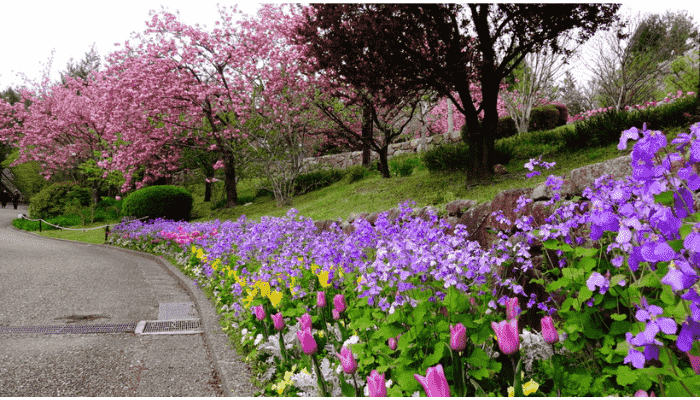
The Uji City Botanical Gardens is a vast park covering approximately 10 hectares, offering visitors a chance to enjoy a wide variety of plants throughout the year.
The garden features about 530 species and 7,000 plants, including tropical and subtropical varieties such as banyan trees, palm trees, and bougainvillea. Each season brings a unique charm to the garden, making it a delightful destination for nature lovers.
Highlights include the greenhouse, which serves as a rest area, the flower plaza, and the herb garden, among other attractions.
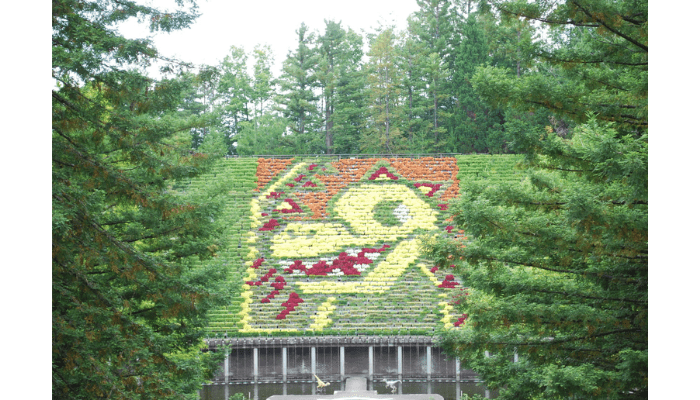
One of the park’s most popular features is the Flower and Water Tapestry, a stunning floral display that changes its design throughout the year. This ever-changing artwork ensures that repeat visitors always have something new to enjoy. The official website provides information about upcoming and past designs, so checking it in advance can enhance your visit.
In May, the gardens host a firefly viewing event, which is a favorite among both tourists and locals. This magical experience adds an extra layer of charm to an already wonderful attraction.
Uji City Botanical Gardens
- Address: 25-1 Hachikenyadani, Hirono-cho, Uji City, Kyoto
- Map: Google Map
- Access: From Uji Station, take Kyoto Keihan Bus No. 240, 240A, or 250A to the “Shokubutsukoen” stop. The garden is just a short walk away.
- Phone: 0774-39-9387
- Closed: Mondays (or the following day if Monday is a holiday), December 28–January 4
- Hours: 9:00 AM–5:00 PM (last entry at 4:00 PM)
- Admission: Adults: 600 yen / Children: 300 yen / Free for infants
- Parking: Regular cars: 400 yen / Large vehicles (11 passengers or more): 1,500 yen
- Official Website: Uji City Botanical Gardens
Just a short trip from the busy center of Kyoto, you’ll find Uji, a place where time seems to flow gently and peacefully.
Here, you can listen to the soothing sounds of the river, take in the stunning natural scenery, explore its rich history, and visit sacred shrines to pay your respects.
Why not experience a uniquely Japanese style of sightseeing in Uji?
▼ Related Articles for Kyoto Sightseeing

